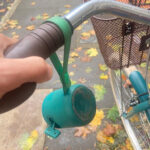From the heart of Sheffield, the UK’s renowned Steel City, emerges Airdrop Bikes, the brainchild of Ed Brazier. Ed, a designer who traded a secure career path to pursue his passion, has meticulously crafted a mountain bike brand that embodies his vision. Wideopenmag sat down with Ed for an insightful conversation to uncover the journey of launching Airdrop Bikes, almost single-handedly. Meet Ed Brazier, the driving force behind Airdrop Bikes.
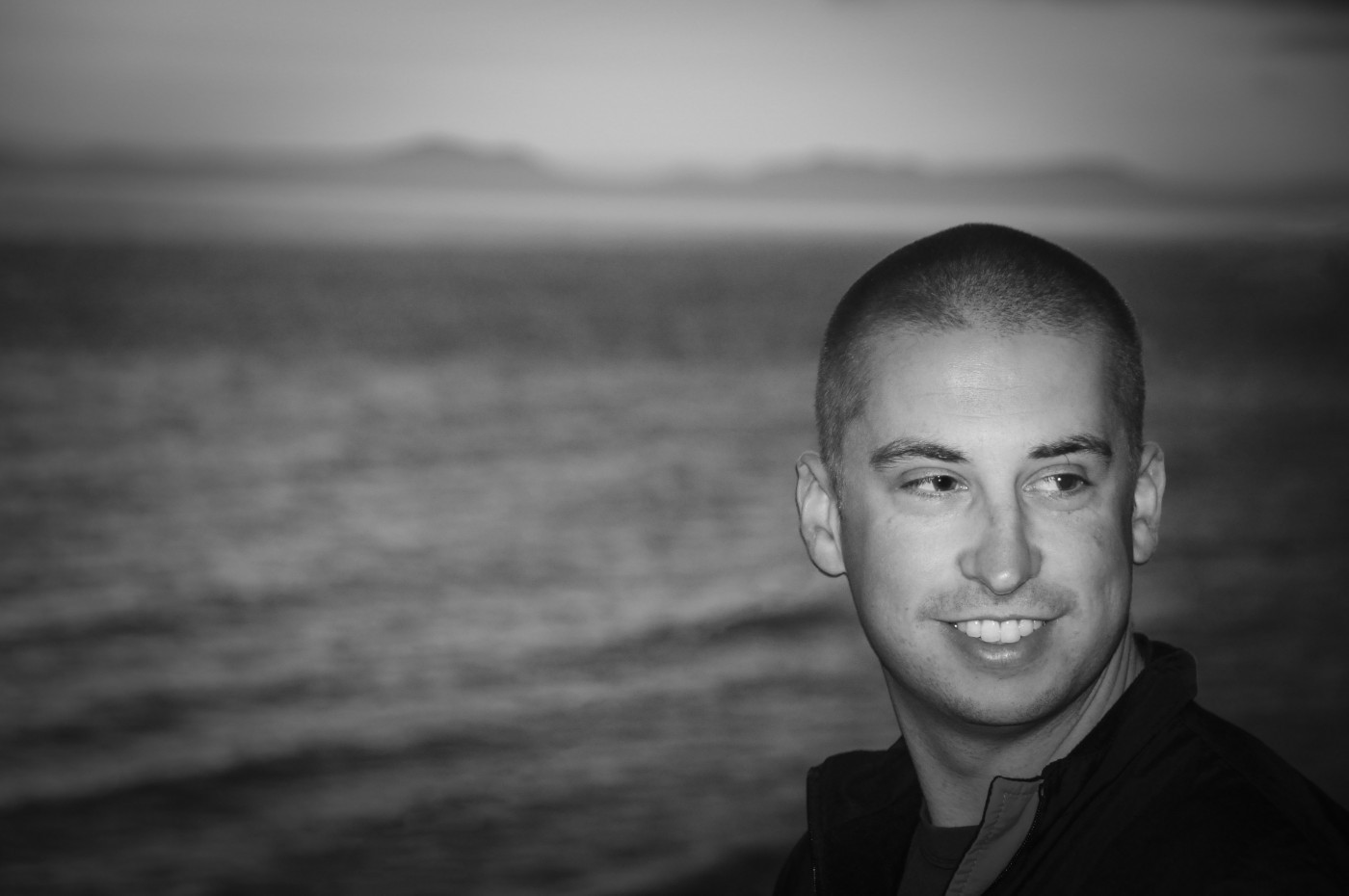 Ed Brazier Founder of Airdrop Bikes in Sheffield Steel City
Ed Brazier Founder of Airdrop Bikes in Sheffield Steel City
The Genesis of Airdrop Bikes: A Designer’s Dream
Ed Brazier, a self-described 35-year-old, somewhat introverted individual with a passion for bike riding and creation, is the founder of Airdrop Bikes. The inception of Airdrop Bikes stemmed from a deep-seated desire for autonomy and a yearning to build something meaningful. Ed candidly admits a lifelong discomfort with traditional employment, a feeling he likened to “cheating.” Driven by an entrepreneurial spirit, he sought to test his capabilities and forge his own path, independent of conventional corporate structures.
His motivation was further fueled by frustrations experienced in previous roles. Witnessing businesses veer in directions that conflicted with his values, coupled with a sense of powerlessness to enact change, spurred him to seek a different model. Ed envisioned a workplace characterized by a close-knit team of like-minded, talented individuals, united by a shared belief in their mission. This vision prioritized substance and integrity over purely profit-driven motives, emphasizing quality of life, exceptional customer service, and the creation of inspiring products – with bikes, naturally, at the core.
Perhaps idealistic, Ed recognized that his aspirations were not fully realized in his previous employment experiences, despite working in some genuinely “cool places.” This realization solidified his resolve: if he desired such an environment, he would have to create it himself. Acknowledging the magnitude of the undertaking, Ed dedicated himself to acquiring the necessary skills and experience. For twelve years, he diligently honed his expertise while consistently saving capital, laying the groundwork for his future venture. Finally, feeling adequately prepared, he took the leap, embarking on the journey of Airdrop Bikes.
 Airdrop Edit Mountain Bike in Wales Landscape
Airdrop Edit Mountain Bike in Wales Landscape
An Outsider’s Perspective on the Cycling Industry
Ed doesn’t identify as an industry insider, perceiving himself as an outsider. His cycling background is rooted in a genuine love for riding, nurtured in a rural setting with ample opportunities for outdoor adventures. Growing up in a village surrounded by fields and hills, bikes were the primary mode of exploration for Ed and his friends. With three brothers and a close-knit group of mates, cycling was a constant part of their lives, fostering a deep connection with the outdoors from a young age. Inspired by his older brothers’ foray into climbing and mountain biking during the early 90s, Ed naturally followed suit. At 12 or 13, he invested in a second-hand 1992 Orange Clockwork, marking his entry into serious mountain biking. This first proper bike opened up new possibilities, including challenging rides in the Lake District. He recalls the “old-school” experience of carrying bikes up mountains like Helvellyn, a testament to the adventurous spirit of early mountain biking.
While initially drawn to riding, Ed’s interest soon expanded to the technical aspects of bikes – the materials, the technology, and the engineering. With a natural inclination towards making things, he was equally captivated by bike design and components. Although unable to afford the high-end, anodized bike parts of the era, he immersed himself in learning about them. Later, while pursuing university, cycling took a backseat to climbing for a period, though it remained a constant presence in his life, particularly living in Sheffield, a hub for outdoor enthusiasts. A pivotal experience in Finale Ligure a couple of years prior to launching Airdrop reignited his passion for mountain biking. Riding his 125mm trail bike with outdated geometry and lightweight components on the demanding trails of Finale exposed the limitations of his current setup. This trip highlighted the type of riding he desired and the need for a more capable, modern bike, solidifying the vision for Airdrop’s debut model, the Edit.
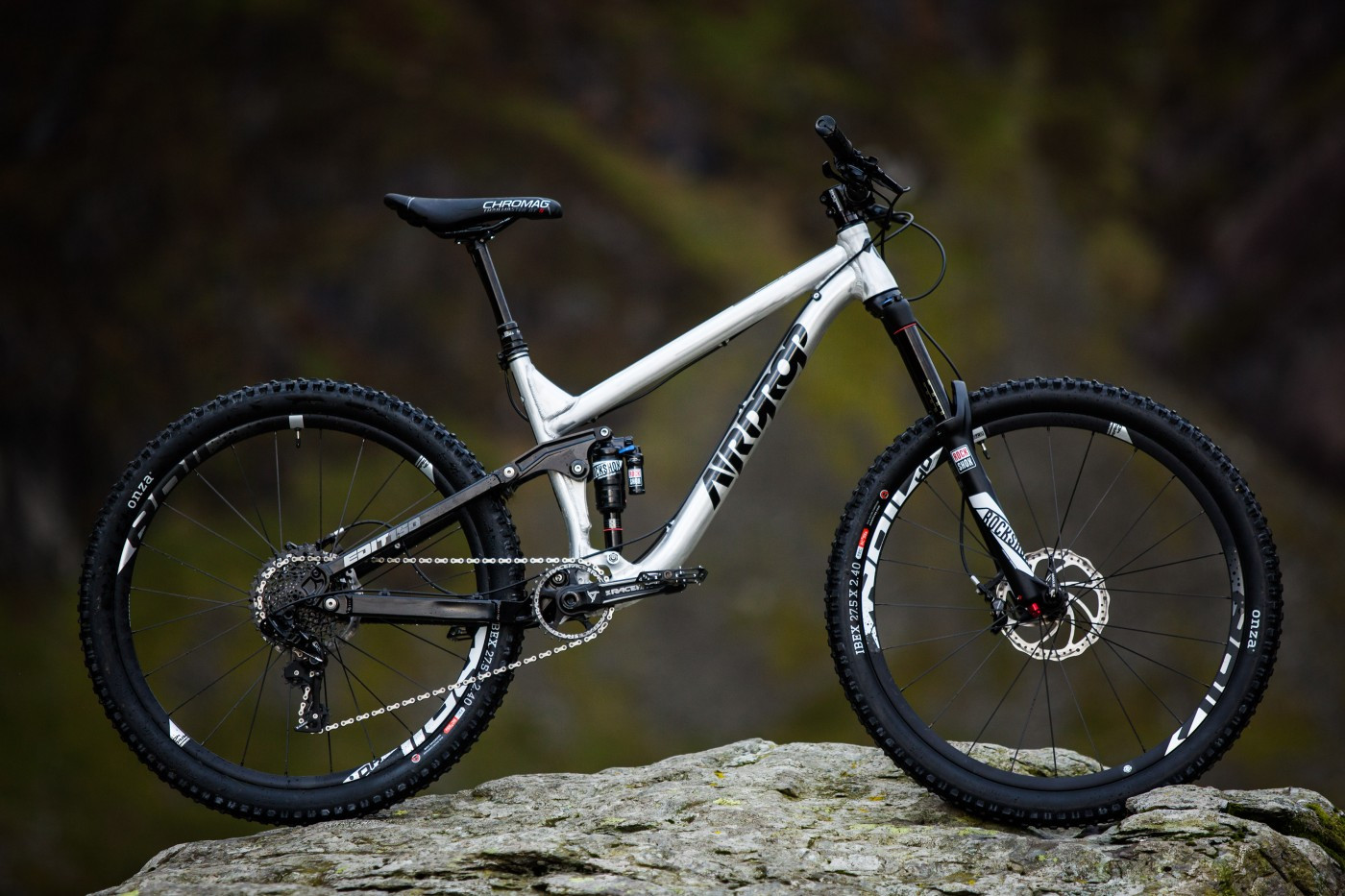 Airdrop Edit Mountain Bike on Welsh Trail
Airdrop Edit Mountain Bike on Welsh Trail
Hand-Built Ethos in Batch Production
Airdrop Bikes occupies a unique space between mass production and bespoke frame building. Ed clarifies that Airdrop doesn’t operate as a traditional, one-at-a-time bespoke frame builder, for whom he holds immense respect. Instead, Airdrop frames are produced in batches in a small, specialized factory where manual processes are prioritized. The tubes are cut and mitered using manually operated machinery, and experienced craftsmen meticulously set up jigs and weld the frames by hand. These skilled technicians possess 20 to 25 years of experience in frame fabrication, ensuring a high level of quality and craftsmanship. While CNC components are incorporated, their production also maintains a degree of individual attention, being produced one at a time on smaller machines. Ed describes the production as neither fully artisan nor mass-produced, striking a balance that feels “just right” for the brand’s ethos.
This commitment to human involvement extends to the final stages of the process. Each frameset, bundle, or complete bike order is assembled and meticulously checked by hand at Airdrop. Ed emphasizes that despite being an online-only business, Airdrop is far from impersonal or robotic. He wants customers to know that real people are behind every Airdrop bike, ensuring quality and care at every step.
Strategic Factory Partnerships: Finding the Right Fit
Securing the right manufacturing partners proved to be one of the most challenging aspects of launching Airdrop Bikes. Starting without any industry connections, Ed faced a steep learning curve in navigating the complexities of supply chains and manufacturing relationships. He embarked on a period of extensive cold-calling, encountering skepticism and rejection. Overcoming the initial hurdle of being taken seriously as an unknown entity with no established brand or financial backing required persistence and determination.
Despite the setbacks, Ed persevered and managed to engage with a few factories willing to consider his project. He narrowed down his options to three potential partners and initiated discussions while developing the initial bike designs. His top choice was a renowned factory producing bikes for some of the industry’s leading brands. Collaboration progressed to the prototype stage, but unexpectedly, after several months, the factory abruptly withdrew without explanation.
While initially a significant blow, this setback proved to be a valuable learning experience. It redirected Ed towards seeking a smaller, more personally invested factory, where Airdrop’s project would hold greater significance. This shift led him to a factory that resonated with his vision, demonstrating a positive and receptive approach to his ideas. This partnership marked a turning point, contrasting sharply with the impersonal and ultimately unsuccessful experience with the larger factory.
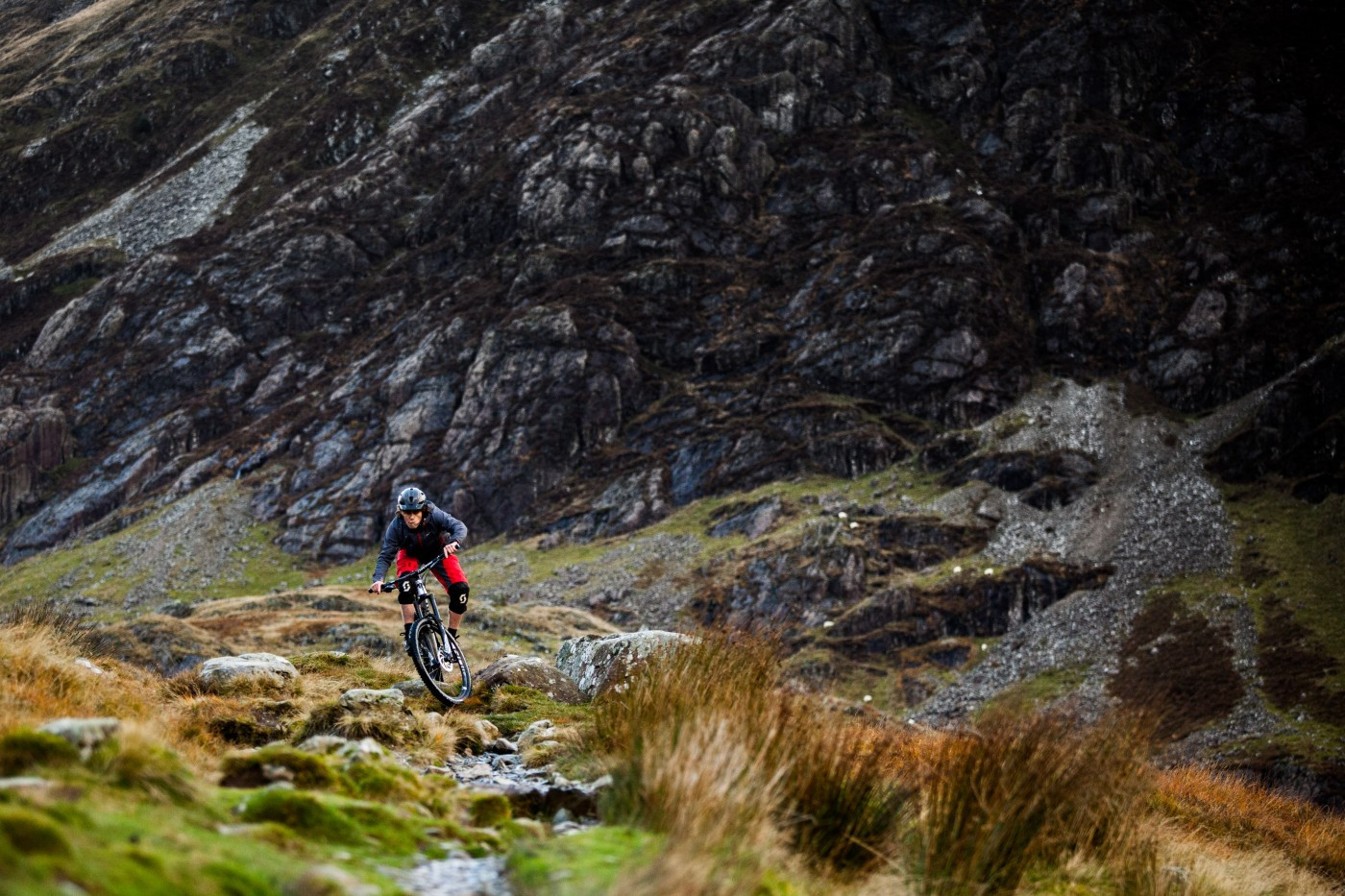 Airdrop Edit Frame Welding Jig
Airdrop Edit Frame Welding Jig
The Advantages of Small Batch Production
Airdrop Bikes’ commitment to small batch production is driven by both financial realities and strategic advantages. As a fully independent brand, self-funded by Ed’s personal savings, production volume is inherently limited by available capital. Factory minimum order quantities per batch and size further shaped this approach. However, Ed embraced this constraint, recognizing the benefits of small batches beyond just financial limitations.
Small batch production allows Airdrop to move away from traditional model-year cycles, fostering agility and responsiveness. Improvements and updates can be implemented in subsequent production runs without being constrained by large existing inventories. This approach also enables greater flexibility in offering different colors and limited editions, fostering creativity and responsiveness to market demands. Ed contrasts this with larger brands often constrained by massive pre-orders, potentially leading to outdated designs remaining in production for extended periods. Small batches empower Airdrop to experiment, innovate, and adapt quickly.
A One-Man Brand: Building from the Ground Up
Currently, Airdrop Bikes is primarily a solo operation, reflecting Ed’s initial vision of building the brand from the ground up. He intentionally embraced the challenge of starting from scratch, viewing it as a test of his capabilities. The inherent difficulty of launching a bike brand single-handedly was precisely the challenge he sought.
Drawing upon his extensive experience from previous design and management roles, Ed possesses a solid foundation of relevant skills. However, the journey has involved a substantial amount of learning and adaptation across various business functions. Guided by the belief that “you can do anything if you set your mind to it,” Ed combines determination with pragmatism. Recognizing the need for specialized expertise, he strategically seeks advice from top-tier professionals, such as a design engineer who consults on suspension kinematics and engineering, ensuring technical rigor in bike development.
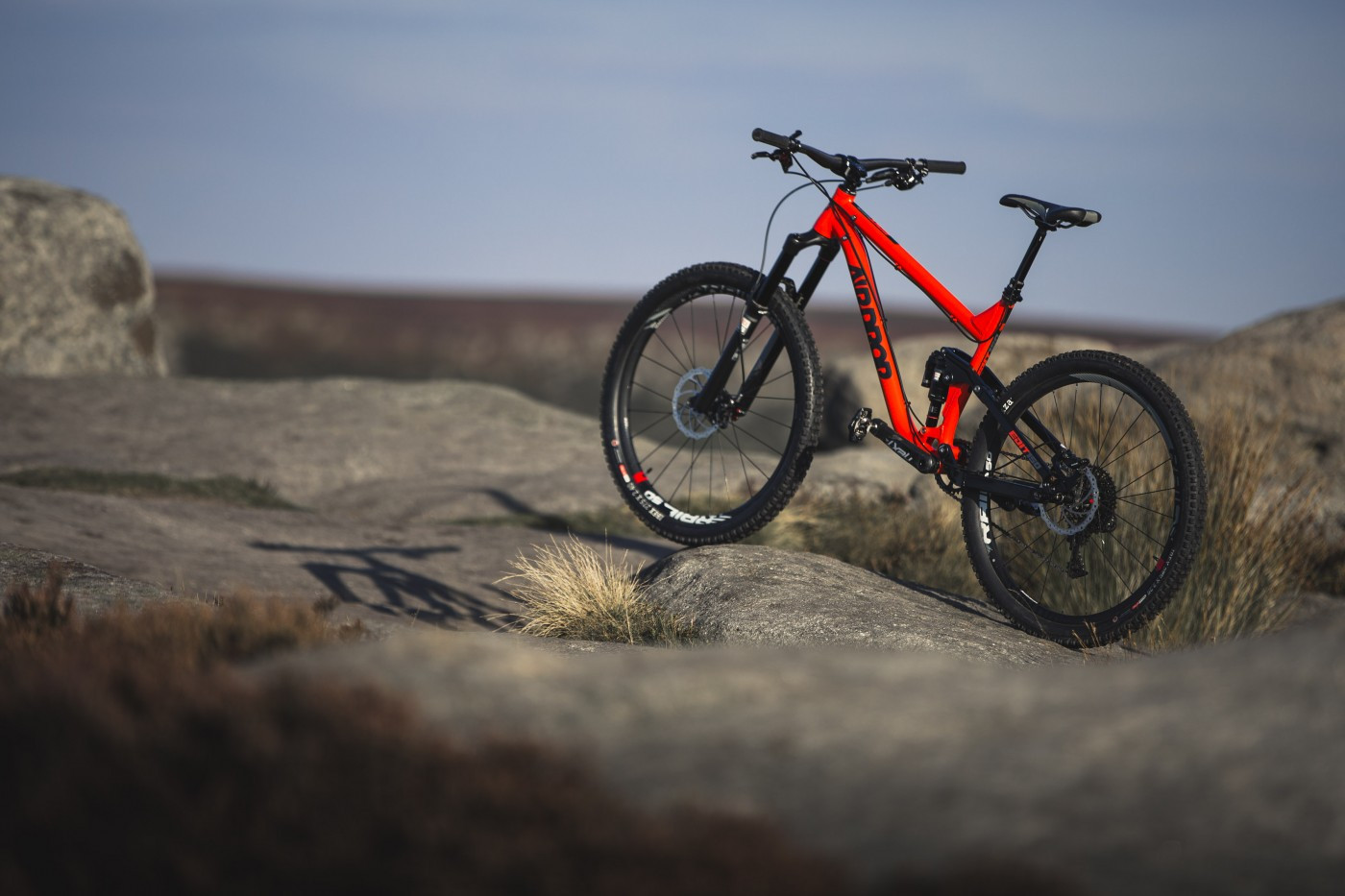 Airdrop Edit Mountain Bike Peak District Scenery
Airdrop Edit Mountain Bike Peak District Scenery
Sacrifices and Rewards: Prioritizing Quality of Life
When asked about sacrifices made to reach this stage, Ed emphasizes that he hasn’t sacrificed anything truly important. Reflecting on his previous career as a head of department in a large company, he acknowledges the trappings of a high-status, well-compensated position but ultimately realized the detrimental impact on his quality of life. The birth of his daughter brought this into sharp focus, as he found himself working long hours, experiencing high stress levels, and missing out on precious family time. This realization prompted a reevaluation of his priorities, leading him to prioritize personal fulfillment and work-life balance.
He left his demanding corporate job, relinquishing the associated financial security and status. Investing his entire life savings into Airdrop Bikes was a significant financial commitment, but Ed emphasizes the immense increase in his overall happiness. He now enjoys the simple pleasures of daily life, such as walking his daughter to nursery, and dedicates his workdays to a project he deeply believes in. The flexibility to ride his bike, sometimes even as part of his “job,” underscores the lifestyle shift he has embraced.
The only truly difficult sacrifice was selling his extensive camera equipment, a passion for wildlife photography he had cultivated for years. Building a high-quality system of cameras and lenses had been a long-term goal, culminating in the acquisition of a dream lens. However, recognizing the financial needs of Airdrop and the potential distraction of pursuing photography alongside the business launch, he made the difficult decision to sell it all, including the coveted lens he never had the chance to fully utilize. Despite the emotional pang, Ed maintains a pragmatic perspective, viewing it as a sacrifice of “just stuff,” secondary to his overarching goals.
 OneUp Clip Pedals Advertisement Banner
OneUp Clip Pedals Advertisement Banner
Financial Sustainability and Full Commitment
In the initial month after leaving his corporate job, Ed dedicated himself to riding his bike, a period of respite after 12 years of continuous work with limited vacation time. However, with family responsibilities and the need to build Airdrop Bikes, he transitioned into freelance design work to maintain financial stability and generate new business contacts. As Airdrop Bikes gained momentum and demanded increasing attention, Ed recognized the need for full commitment. To avoid Airdrop becoming a mere hobby, he concluded his freelance projects and dedicated himself entirely to the brand. This full immersion, he believes, was crucial for realizing Airdrop’s potential. Acknowledging the financial challenges inherent in launching a self-funded business, Ed maintains a long-term perspective, confident that the rewards of Airdrop’s success will be well-earned.
High Stakes and Personal Investment
Airdrop Bikes represents a deeply personal and high-stakes venture for Ed. He has invested his entire life savings and 18 months of dedicated effort, publicly declaring his commitment to making Airdrop a success. Failure is not an option, fueling his unwavering determination to overcome challenges and achieve his vision.
 Airdrop Edit Frame Detail
Airdrop Edit Frame Detail
Design Expertise: A Foundation for Success
Ed’s 12-year career as a designer, encompassing web design, graphic design, and design management, has provided a directly relevant skillset for launching and managing Airdrop Bikes. Experience in website development, e-commerce, retail, and marketing, particularly in developing action sports brands, has proven invaluable. However, Ed emphasizes that core design skills transcend specific software proficiencies. He defines a designer as someone capable of identifying and thoroughly understanding problems, then systematically developing effective solutions. This problem-solving approach, he believes, is the most crucial skill, applicable to any challenge encountered in building Airdrop Bikes.
Furthermore, his design career shaped his perspective on business practices, solidifying his vision for Airdrop’s ethical and customer-centric approach. Disagreements with certain cynical or overly profit-driven practices he witnessed in previous roles informed his commitment to building a business with integrity and a focus on genuine value.
Learning Curve and Business Acumen
Ed’s deep-seated interest in bikes, their construction, and functionality provided a strong foundation of technical knowledge. Driven by a thirst for continuous learning, he immersed himself in contemporary bicycle geometry principles, handling dynamics, and suspension kinematics. He conducted extensive market research, analyzing competitor bikes, reviewing industry feedback, and test-riding numerous models. Seeking diverse perspectives and critically evaluating conventional wisdom were key aspects of his learning process. This comprehensive approach enabled him to develop informed judgment and refine his design vision for Airdrop Bikes.
On the business side, Ed gained valuable insights from working in fast-paced companies, observing business development strategies firsthand. He acknowledges the opportunities he was given and the mentorship he received from previous employers. Ultimately, the desire for autonomy and decision-making control was a primary driver for launching his own venture. Navigating the practicalities of setting up a business, however, proved to be a significant learning experience. He found government support for new businesses to be largely rhetorical, encountering bureaucratic hurdles and complexities. He views these challenges as a test of genuine commitment, filtering out those who are not truly dedicated. Embracing a hands-on approach and accepting trial and error as part of the process, Ed emphasizes that perseverance and determination are more critical than any specific skill in overcoming obstacles and achieving success.
Prototype Evolution and Rigorous Testing
The production-ready Airdrop Edit represents the culmination of multiple iterations, evolving through three main prototypes, with the rear triangle undergoing four physical versions. Limited prototyping budgets necessitated a resourceful and efficient approach to development. Ed estimates hundreds of design iterations over 18 months, prioritizing smart resource allocation and maximizing every expenditure. While acknowledging that larger brands may have the resources for more extensive prototyping, he emphasizes that Airdrop prioritized quality and refinement, only moving to production when he was fully confident in the Edit’s readiness.
Beyond physical prototypes, testing involved extensive real-world riding. Ed sought feedback from a diverse group of riders, encompassing various skill levels and riding styles, on diverse trails. He conducted blind tests, concealing geometry and size information to mitigate bias, and performed back-to-back comparisons on identical trail sections. Recognizing the inherent complexities of bike testing, Ed acknowledges the limitations of purely scientific optimization. His primary goal was to create a bike that is genuinely fun to ride, a subjective quality assessed through rider enjoyment and feedback. Complementing real-world testing, frames underwent rigorous EN standard testing in the Far East and additional validation at Bureau Veritas in the UK, ensuring structural integrity and regulatory compliance.
 Airdrop Edit Complete Bike Studio Shot
Airdrop Edit Complete Bike Studio Shot
Future Trajectory and Team Expansion
Looking ahead, Airdrop Bikes has another bike model in development, promising to be equally “rad.” The immediate future hinges on the market reception of the Edit, which remains uncertain. Ed anticipates a potential slow burn or rapid growth trajectory. Recognizing the limitations of a solo operation, he intends to expand the team, seeking individuals who can contribute meaningfully and share his vision. Building a collaborative team has always been a core aspiration for Airdrop. Regardless of the immediate outcome, Ed expresses enthusiasm for the journey, aiming to maximize his time riding and creating engaging content. Plans for a video project and an “epic trip,” potentially back to Finale Ligure, are underway.
Gratitude and Acknowledgements
Ed extends heartfelt gratitude to his wife, Muniza, for her unwavering support and belief in his vision. He also thanks his family and friends for their understanding and patience throughout the demanding launch process. Finally, he expresses appreciation to the suppliers who took a chance on a new brand and provided crucial support in bringing Airdrop Bikes to fruition.
Explore the world of Airdrop Bikes further at their homepage.

